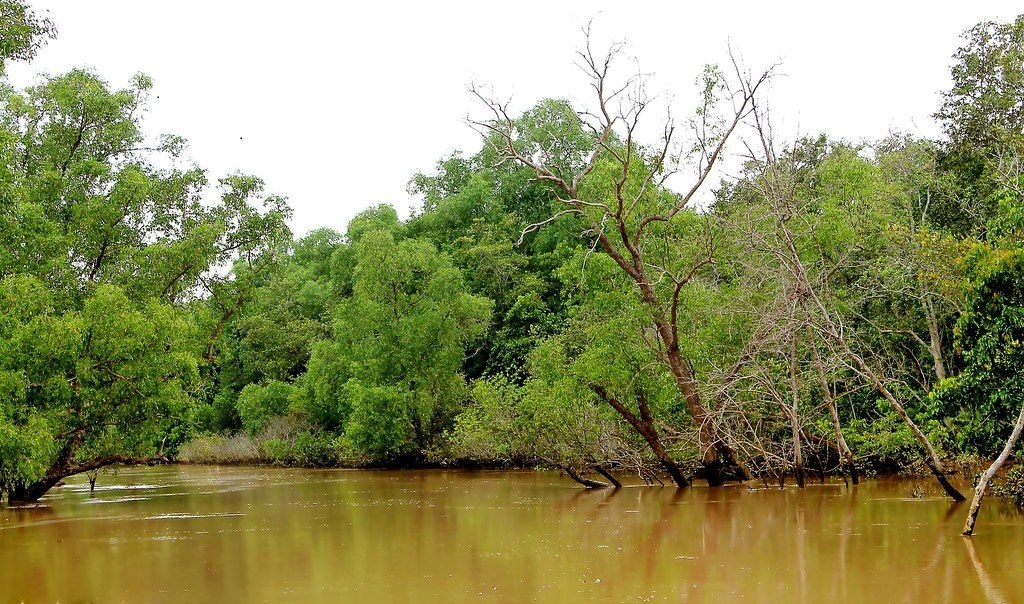Kendrapara: A fall in fresh water retaining capacity of the Kharasrota river in this district might spell doom for Bhitarkanika eco-system and destroy its bio-diversity by 2051, a report said.
This has sent alarm bells ringing among residents and green activists even as the district administration is hell bent on carrying out construction of a mega drinking water project on the river at Barunadiha under Rajkanika block in this district.
Magsaysay award winner and waterman Dr Rajendra Singh had recently visited the district and threw his weight behind the agitation of the people against the drinking water project.
Locals have been staging a hunger strike on the issue for 18 days. The agitation is spearheaded by Kharasrota Nadi Banchao Sangram Samiti, an outfit of local people affected by the project.
Singh has stressed on construction of small water projects instead of big ones which could resolve the drinking water problem in the area. Local people have expressed concern over the decline in water retaining capacity of the river.
They have been agitating against the project demanding protection of their life and livelihood. Environmentalists have also opposed the project.
Srikant Nayak, an environmentalist and a member of the Bhitarkanika eco-sensitive monitoring committee, has said the inflow of fresh water to Bhitarkanika has reduced drastically. He demanded formation of a special technical committee to look into these aspects and suggest measures to save the Bhitarkanika.
This had been stated in a joint workshop on ‘Integrated Management of Water and Environment’ in Bhitarkanika, December 16, 2020, he said.
The workshop had been jointly organised by Rajnagar forest division, Chilika Development Authority and GIZ India.
Attending the workshop, scientists Gurudeep Rastogi, Khuswant Singh and others said 74.64 per cent of fresh water was flowing into Bhitarkanika wetland in 2001.
This has come down to 46 per cent. During non-monsoon period, it is only 15 per cent. A study of the model on availability of water shows the flow into the Brahmani river was 79 per cent in 2001 which will drop to 31 per cent in 2051.
As a result, the fall in flow might destroy the biodiversity of the wetland and harm cultivation in the district. Similarly, the demand for fresh water will increase due to the burgeoning population and urbanization.
Moreover, farmlands on Brahmani river basin required 2000 million cubic meter of water in 2001 which will increase to 10,000 million cubic meter in 2051.
Meanwhile, a survey by IIT Hyderabad which the district administration has been using to move ahead with the drinking water project, has been termed false by Nayak.
He said the 173- page report is faulty while its last 15 pages are a straight lift from the web. The report is silent on the impact of the drinking water project on the bio-diversity of Bhitarkanika.
The district administration is also unable to say when the IIT team visited Bhitarkanika and what expenses had been incurred on their visit. The report carries the photo signatures of the person who had prepared it and persons who are not members of the eco-sensitive monitoring committee.
Khitish Kumar Singh, an educationist, said a report of the Union Water Resources Ministry in 2015 said the water retaining capacity of Brahmani and Kharasrota rivers is declining by the day as the rivers are getting buried on the downstream due to formation of large islets.
As a result, the flow of fresh water to Bhitakanika has reduced drastically. Duryodhan Mohanty, president of Kharasrota Sangram Samiti, claimed construction of barrages at Jokadia and Tantighai to supply water to industrial units in Kalinganagar has resulted in decline in the water flow.
PNN
